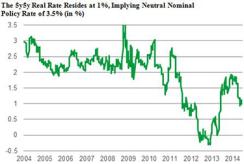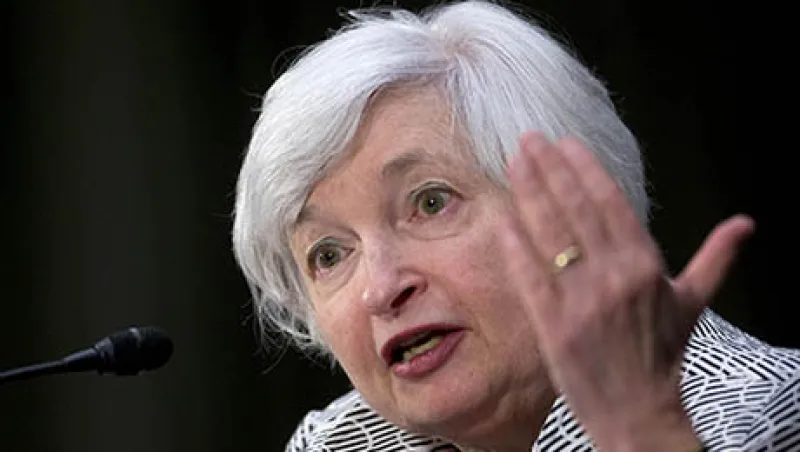Last month I wrote a Global Market Thought Leaders article that outlined six factors behind the rally in rates during the first half of 2014. Given the subsequent rally in real rates, how do Treasury Inflation-Protected Securities (TIPS) valuations appear today, and what do the present real-rate levels and forward markets imply about the shifting inflation landscape?
Many factors affected valuations: an investor base positioned for higher rates; a scarcity of high-yielding assets against a backdrop of unconventional monetary policy; greater institutional demand for long-dated high-quality assets; and first-quarter growth data, which were negatively impacted by weather and geopolitical risks. And also, there is the ever-present discussion of a lower terminal fed funds rate.
We view the 5y5y real rate (the market-implied five-year real rate, five years into the future) as a sound proxy for assessing valuations in the rates market. Because it is a forward rate, given the present infinitesimal interest rate, it diminishes the impact of extreme valuations at the very front end of the yield curve. In addition, the 5y5y real rate sheds some light on inflation and growth trajectory by showing what the market expects five-year real rates to be in 2019.
As of early July, the market-implied 5y5y real rate was roughly 1 percent. Essentially, it suggests that the market is pricing a terminal, or neutral, real policy rate of about 1 percent. As shown in the chart below, apart from a period in the latter half of 2012 and in early 2013, when the U.S. Federal Reserve was conducting open-ended quantitative easing, we are still very close to historic lows. If we assume a risk premium of zero and translate the Fed’s inflation target (with the personal consumption expenditure at 2 percent) into a core consumer price index equivalent of 2.5 percent, this puts the nominal neutral rate at around 3.5 percent. Present valuations thus imply that the market is already priced below the median of the Fed’s dot-plot chart for the long-term fed funds rate.

Given this information, what is our prognosis for real and nominal rates going forward? We believe that both spot real rates and forward rates are likely to move higher from present levels. This implies that the strong TIPS market performance (and rates) witnessed in the first and second quarters of 2014 may be in for a period of consolidation as the low-inflation regime that had been in place postcrisis shifts. More specifically, we believe the markets are transitioning from a core inflation rate (core consumer price index) that averaged 1.6 percent year-over-year since the beginning of 2009 to one that has the potential to remain well above 2 percent in the near future.
This positive inflation momentum is apparent from both a top-down and a bottom-up perspective. I will examine both of these views, as well as real rate valuations from a cross-market standpoint, in my next Global Market Thought Leaders column.
Martin Hegarty, managing director, is head of BlackRock’s inflation-linked bond portfolio management team within the institutional multisector group in New York.
Get more on fixed income.






